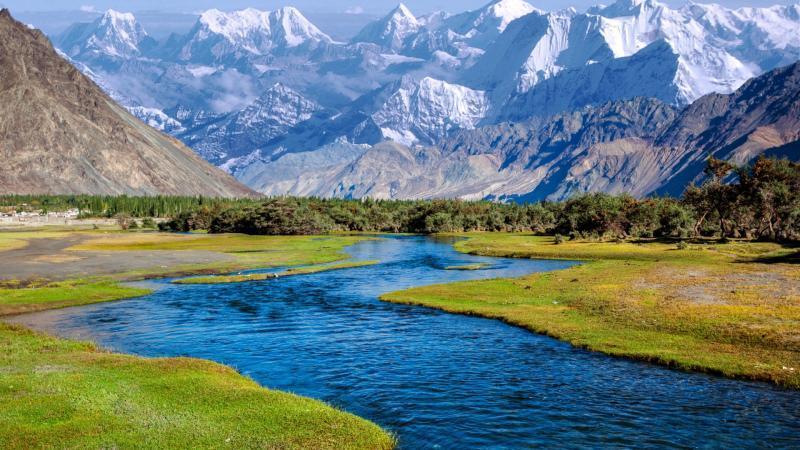
Impact of Farming and Geology on Himalayan Spring Water
The Himalayas, home to some of the most pristine and untouched natural beauty on the planet, are also a source of some of the world’s most pure and refreshing drinking water. The region’s numerous springs, fed by the snow-capped mountains and glaciers, provide a vital source of clean drinking water for the local communities. However, behind the crystal-clear waters lies a complex interplay between geology and farming practices that can significantly impact the quality of this vital resource.
A recent study published by scientists analyzed the chemistry of Himalayan spring water, revealing a fascinating story of the interplay between geology and farming practices. The research highlights the importance of understanding these interactions to protect the vital water sources for mountain communities and ensure safe drinking water.
Geological Influences on Spring Water
The Himalayas are a geological wonder, with rocks that date back millions of years. The region’s unique geology, shaped by tectonic forces, has created a complex network of faults, fractures, and joints that allow water to seep through the rocks and emerge as springs. The chemical composition of the spring water is heavily influenced by the geology of the region, with minerals and ions leaching from the rocks and soil.
For instance, the study found that spring water from the Himalayas contains high levels of calcium, magnesium, and potassium, which are common in the region’s rocks and soil. These minerals play a crucial role in determining the taste, odor, and overall quality of the water. The research also highlighted the presence of other minerals, such as iron, manganese, and silica, which can affect the water’s color, taste, and potential health impacts.
Farming Practices and Contamination
While geology plays a significant role in shaping the chemistry of Himalayan spring water, human activities, such as farming practices, can also have a profound impact on the water’s quality. The study found that many of the springs analyzed contained high levels of nitrates, a common contaminant associated with agricultural runoff.
Nitrates are a byproduct of fertilizer use in farming, and when they enter waterways, they can pose a significant risk to human health, particularly for infants and pregnant women. The presence of nitrates in spring water can also lead to the formation of dangerous compounds, such as nitrosamines, which can cause cancer and other health problems.
Other contaminants, such as pesticides, herbicides, and industrial chemicals, can also enter the water supply through agricultural runoff, posing a significant threat to public health. The study highlighted the need for sustainable farming practices that minimize the use of chemicals and reduce the risk of contamination.
Weathering and Human Activities
Weathering, the natural process of rock breakdown due to exposure to wind, water, and temperature fluctuations, can also impact the chemistry of Himalayan spring water. The study found that weathering can release minerals and ions from the rocks, affecting the water’s pH and hardness. Human activities, such as construction and mining, can also accelerate the weathering process, further altering the water’s chemistry.
The research emphasizes the importance of considering both geological and human-induced factors when evaluating the quality of Himalayan spring water. By understanding the complex interplay between these factors, scientists and policymakers can develop effective strategies for protecting these vital water sources and ensuring safe drinking water for mountain communities.
Conclusion
The study highlights the critical importance of understanding the interplay between geology and farming practices in shaping the chemistry of Himalayan spring water. By analyzing the chemistry of the water, scientists can identify potential contaminants and develop strategies for mitigating their impact. The research emphasizes the need for sustainable farming practices, reduced use of chemicals, and effective water management strategies to protect these vital water sources.
As the world grapples with the challenges of climate change, water scarcity, and environmental degradation, it is more important than ever to prioritize the protection of Himalayan spring water. By working together to address the complex issues surrounding this vital resource, we can ensure that future generations have access to safe, clean drinking water.
News Source:






